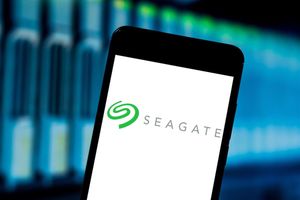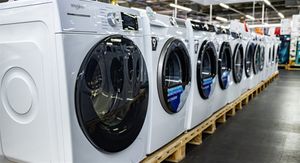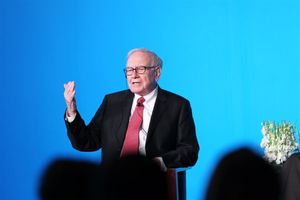- 52% do not realize a high-yield savings account is a good place to keep emergency savings, as many are unaware of FDIC insurance protection.
- Only 35% recognize that high-yield savings accounts have less risk than investment accounts.
- Digital engagement is preferred for managing everyday finances, including viewing account balances (74%), while in-person interaction is favored for high-touch services, such as receiving financial advice (64%).
- Openbank by Santander offers a simple and secure digital-first experience along with a competitive rate on high-yield savings.
Santander Bank, N.A. (“Santander Bank”) today announced the results of a new survey that reveals misunderstandings about financial accounts, such as savings and investments, could be leading to a misalignment between consumers' financial goals and where they keep their money. For instance, 52% do not realize a high-yield savings account is a good place to keep emergency savings, and just 28% know these accounts with an FDIC member institution are safe and secure1. This confusion comes at a time when Americans are increasingly worried about market conditions, putting even more significance on their financial decisions.
This press release features multimedia. View the full release here: https://www.businesswire.com/news/home/20250603365477/en/
“During times of volatility, it is even more important for consumers to be equipped with the information they need to make sound financial choices,” said Swati Bhatia, Head of Retail Banking & Transformation for Santander Bank and CEO for Openbank in the United States, Santander’s new national, digital banking platform. “Consumers are worried about uncertainty, and they are confused about what accounts best align with their goals. Financial institutions such as Santander have an opportunity to help guide them to the right accounts to meet their needs.”
The findings are part of the fifth installment of Santander Bank’s Openbank Growing Personal Savings (“GPS”) Tracker, a research series exploring Americans’ spending and savings habits.
Consumers Blur the Line Between Saving and Investing
The survey found consumers may be mistaking higher-yielding bank accounts, such as high-yield savings accounts, with investment accounts that may involve risk of loss of principal. For instance, 35% realize high-yield savings accounts are safer than accounts that have various investment options, such as stocks and bonds, and four in 10 (42%) know that high-yield savings accounts are generally predictable from month-to-month. This lack of knowledge of high-yield savings offerings could lead savers to keep their money in lower-yielding accounts that they incorrectly view as less risky.
Americans also lack an understanding of the risks of investing, which could expose savings to market volatility. More than four in 10 (43%) do not realize accounts with various investment options involve risk of loss, including 13% who do not believe there is any risk and 30% who do not know. Meanwhile, just over half (54%) believe the stock market is generally unpredictable month-to-month, with fluctuations that can earn compelling gains over time, but can also lead to near-term losses. Some consumers with brokerage accounts are exposing their savings to this volatility by using these accounts for shorter-term goals, such as emergency savings (34%) or vacation and leisure expenses (18%), subjecting them to a potential downturn when they need to access their funds.
Consumers Miss Out on Interest and Safety While Preparing for the Unexpected
While most investors remained undeterred amid stock market losses and economic uncertainty in Q1—with just 17% reducing regular contributions to investment accounts—savers were quick to adjust. Nearly six in 10 Americans (58%) shifted their savings approach during this time, as more focus on saving for emergencies—the most common change since the start of the year. This shift may be needed, as less than half of consumers (45%) are comfortable with the emergency savings they have, and 51% do not have at least three months’ worth of emergency savings available.
Americans can accelerate progress toward their goals by using higher-yielding savings options—such as high-yield savings accounts or certificates of deposit (CDs)—but a majority (65%) do not have one of these accounts. Instead, most savers use low-growth alternatives—including traditional savings accounts (39%) or checking accounts (32%)—as their primary savings destination. Seven in 10 do not realize there are high-yield savings accounts that pay at least a 4.00% Annual Percentage Yield (APY), roughly 10x the national average2.
Meeting Customers Where They Are and Where They Are Going
Financial institutions have an opportunity to help customers bridge this knowledge gap, but they must meet them where they are, with digital channels becoming increasingly popular. Most bank customers already favor digital interactions for staying on top of everyday finances, including viewing account balances (74%) and transferring money between accounts (69%), while in-person engagement is generally preferred for high-touch services, such as receiving financial advice (64%) or opening an investment account (64%). The trend continues to point toward digital platforms, with Gen Z and Millennials being more likely to skew digital than older generations for actions such as opening a checking or savings account (49%) and getting account assistance (46%).
“The findings reinforce our aspirations to transform into a full-service digital bank with branches, offering customers flexibility and peace of mind knowing their money is with a bank that is part of one of the largest financial institutions in the world,” Bhatia said. “Traditional banks lack the digital capabilities of fintechs, while fintechs do not offer in-person interaction customers may sometimes require. Openbank blends the agility of a fintech with the personal touch of an in-person experience, allowing us to better meet consumers’ evolving needs.”
Methodology
This research on growing personal savings, conducted by Morning Consult on behalf of Santander Bank, surveyed 2,253 Americans adults. This Q1 study was conducted between March 31 – April 1, 2025. The interviews were conducted online, and the margin of error is +/- 2 percentage points for the total audience at a 95% confidence level. This data was weighted to target population proportions for a representative sample based on age, gender, ethnicity, region, and education. Monthly measures were based on additional monthly survey pulses, conducted by Morning Consult on behalf of Santander Bank, of approximately 2,200 Americans adults per month. The monthly iterations were conducted January 16 - 17, February 14 – 16, and March 14 - 16, 2025 to measure month-over-month changes. Each monthly survey was conducted online, and the margin of error is +/- 2 percentage points for the total audience at a 95% confidence level.
The full report and more information about the Santander Bank, N.A. survey can be found here.
1FDIC (Federal Deposit Insurance Corporation) insurance is a federally backed deposit insurance fund that protects any insured account against loss due to bank failure. Under the FDIC, the standard coverage limit is $250,000 per depositor, per FDIC-insured bank, per ownership category (e.g. single, joint, trust, business, etc.).
2The typical savings account has an Annual Percentage Yield (APY) of 0.41%, according to the FDIC as of April 21, 2025.
About Santander Bank, N.A.
Santander Bank, N.A. is one of the country’s leading retail and commercial banks, with $102 billion in assets as of December 31, 2024. With its corporate offices in Boston, the Bank’s more than 4,400 employees and more than 1.8 million customers are principally located in Massachusetts, New Hampshire, Connecticut, Rhode Island, New York, New Jersey, Pennsylvania, Delaware, and Florida. The Bank is a wholly-owned subsidiary of Madrid-based Banco Santander, S.A. (NYSE: SAN), recognized as one of the world’s most admired companies by Fortune Magazine in 2024, with approximately 175 million customers in the U.S., Europe, and Latin America. It is overseen by Santander Holdings USA, Inc., Banco Santander’s intermediate holding company in the U.S. For more information on Santander Bank, please visit www.santanderbank.com.
Openbank in the United States is a division of Santander Bank, N.A., which is a Member of FDIC and a wholly owned subsidiary of Banco Santander, S.A. © 2025 Santander Bank, N.A. All rights reserved. Santander, Santander Bank, Openbank, the Flame Logo are trademarks of Banco Santander, S.A. or its subsidiaries in the United States or other countries. All other trademarks are the property of their respective owners. For more information on Openbank in the United States, please visit www.openbank.us.
View source version on businesswire.com: https://www.businesswire.com/news/home/20250603365477/en/
Contacts
Media
Andrew Simonelli
andrew.simonelli@santander.us
Caroline Connolly
caroline.connolly@santander.us






